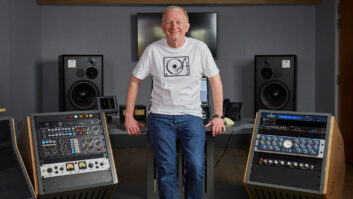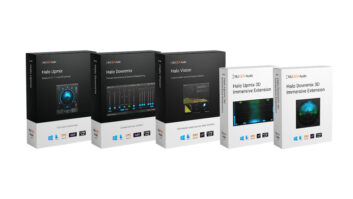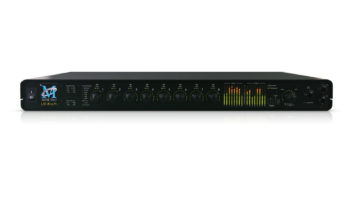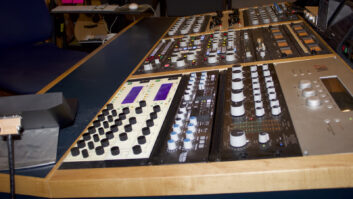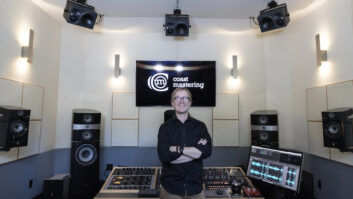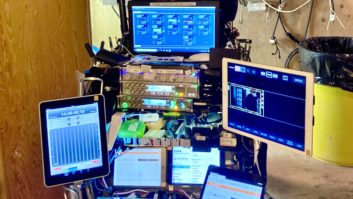SPRINGFIELD, VIRGINIA – JULY 2009: Airshow Mastering’s East Coast studios are relocating to a larger facility in Takoma Park, Maryland from its longtime operations base in Springfield, Virginia. The new facility will incorporate two mastering studios, each equipped with an eight-channel Metric Halo ULN-8 interface outfitted with the latest 2d upgrades and running v5 software in conjunction with soundBlade(tm) software from Sonic Studio, LLC.
Airshow Mastering co-owner Charlie Pilzer comments, “The MIO is an integral part of the design at the new facility. I have used the Metric Halo boxes with Sonic Studio soundBlade for a long time. They are my principal interface to the computer.”
Pilzer utilizes Metric Halo ULN-8 multichannel and ULN-2 two-channel interfaces for a variety of applications. “I mostly work in the studio and do CD mastering, audio editing and audio restoration. But that’s not all I use them for. The ULN-2 goes with me on virtually every live gig that I do. When I do location music recording, it’s the same thing. I’ll choose the boxes to take with me depending on the channel count. I’ve recorded everything from large choruses with a stereo pair of mics through the ULN-2 and the v5 recording panel to multitracking in Nuendo using multiple ULN-8s + a 2882 That’s all part of Metric Halo’s flexibility.”
“Plus,” he continues, “I use it as an interface for Metric Halo’s SpectraFoo audio analysis software. I can use it to inject signals or music into a PA system and then look at the responses, using the various analysis tools in SpectraFoo to help tune the system. I even use it as a test system to check out my gear.”
The new ULN-8, incorporating 2d technology and v5 software, has brought a new level of functionality to the Metric Halo interface, he says. “It’s like having this cool little analog desk – it’s digital, but you can put character on it. On each of the channels they have a DSP process called “Character” and you can have a very neutral channel or, if you want something that has a little bit of character, you can make it sound like it has a transformer or a tube built into the circuit. You can tailor it to what you need for the project. Another very interesting and useful DSP plug-in is the “TransientControl.” It’s useful for increasing the snap of a snare or taming an electronic keyboard. “
Having DSP running inside the box has proven very convenient, he says. “You have EQ and compression and everything, so rather than having to patch in and out of an external piece of gear, or use native plug-ins, I can use the MIO box to do some of the same things. The EQ is very high-quality and transparent-sounding.”
The interface is truly a Swiss Army knife, and the v5 software additionally lends itself to a wide variety of applications, he says. “The way they’ve set up the new software, whether you’re doing stereo or multitrack or quad or 5.1, you can reconfigure it in a way that makes it really easy to use. I’ve even hooked it up in theater productions and used it with QLab, a program that can fire off cues to multiple channels. I just loaded the driver onto the Mac in the theater, plugged in the ULN-8 and off we went.”
Over the course of a year Pilzer will use the Metric Halo interfaces to mix at various outdoor events such as the Smithsonian Folklife Festival, National Folk Festival and the American Folk Music Festival. “I usually have a ULN-2 with me. It’s getting a little scratched up and dusty but it doesn’t seem to bother the equipment. It’s rugged enough for touring use. I clean it out when I return home,” he reports. That gear goes with him on location recording gigs, too.
In fact, outboard equipment may not even be necessary. At a recent location recording, he shares, “I took two MIO boxes and a set of API preamps, and we never took the APIs out. We had some nice Neumann tube mics and plugged them straight into the MIO and it sounded so good we said, ‘why mess with it?'”
“Metric Halo has always been interested in making something that sounded better than anything else,” says Pilzer, who started out with an original MIO 2882+DSP. “I was looking for a compact system that had preamps, converters and a FireWire interface, but I was principally interested in sound quality. Then, when they came out with the ULN-2, I purchased one. As good as the 2882 sounded, the ULN sounded even better. They upgraded the preamps – Joe Buchalter [president of Metric Halo] worked his analog magic – and they began building more functionality in. Here was a little, self-contained unit with knobs on the front, so if all you needed was stereo in and out, here was this extremely high-quality preamp.”
According to Pilzer, the quality just gets better and better. “First was a high quality multichannel interface, then an amazing two-channel preamp/converter box. Now they’ve come up with the 2d card. And with v5 software, it adds a whole new level of functionality to my existing boxes. And I believe they sound better. It preserves the investment I made in the 2882 and in the ULN-2. The ULN-8 is a whole new level of functionality. It can be configured from the v5 console software, yet operated via the front panel on location. But ultimately, it’s the sound of the Metric Halo MIO interfaces that I find most attractive.”
ABOUT METRIC HALO Based New York’s Hudson Valley, Metric Halo provides the world with high-resolution metering, analysis, recording and processing solutions with award-winning software and hardware.
PHOTO CAPTION Charlie Pilzer, co-owner of Airshow Mastering, will be using the new Metric Halo ULN-8 interface in each of the mastering suites in the new Takoma Park, Maryland studio.

